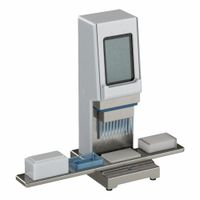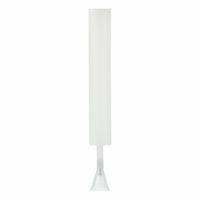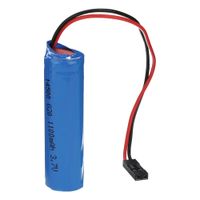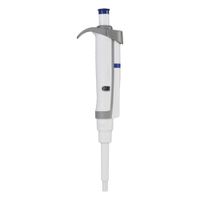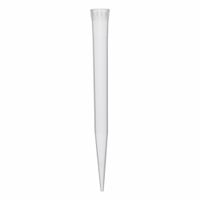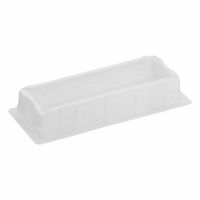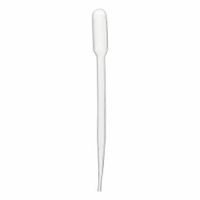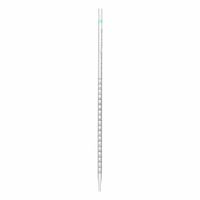Call +(254) 703 030 000 / 751 483 999 / 721 704 777
- Home
- Lab Supplies
- Pipetting Liquid Transfer Products
.....Read More
Frequently Asked Questions
What is the difference between a pipette and a pipetter?
A pipette is a laboratory tool used to accurately measure and transfer small volumes of liquid. It is typically a slender, calibrated tube with a tip that allows for precise liquid handling. Pipettes can be made of glass or plastic and come in various types, such as volumetric pipettes (designed for a single, fixed volume) and graduated pipettes (with markings for different volumes).
A pipetter, also known as a pipette aid or a pipette pump, is a device used in conjunction with a pipette to draw and dispense liquids. It provides the suction or pressure necessary to operate the pipette safely and efficiently. Unlike the pipette itself, the pipetter does not directly measure the liquid volume but rather facilitates the manipulation of the liquid within the pipette. Pipetters can be manual, with a plunger or bulb for suction, or electronic, offering motorized aspiration and dispensing for greater accuracy and reduced user strain, especially in high-throughput applications.
How do you properly calibrate a pipette?
Pipette calibration is crucial for accurate laboratory work. To properly calibrate a pipette, first ensure you have the necessary equipment: a calibrated analytical balance, distilled water (at room temperature), and a temperature probe. Start by setting the balance to zero.
Next, dispense a set volume of distilled water from the pipette into a weighing boat on the balance. Record the weight of the water. Repeat this process several times (e.g., 10 times) for the same volume to ensure reproducibility.
The density of water varies with temperature, so measure the temperature of the distilled water. Use a conversion table to find the density of water at that specific temperature.
Finally, calculate the actual volume dispensed by dividing the average measured weight of the water by the density of water at the measured temperature. Compare this calculated volume to the volume the pipette is supposed to dispense. If there's a significant difference, the pipette may need adjustment or servicing according to the manufacturer's instructions. Regular calibration checks ensure the reliability of your experimental results.
What are the best practices for using transfer pipettes?
When using transfer pipettes, ensure accuracy by maintaining a vertical position and avoiding air bubbles. For consistent results, draw and dispense liquids slowly and smoothly, allowing time for complete transfer. Proper disposal is crucial for safety and contamination prevention. Regularly clean and calibrate reusable pipettes to uphold precision. Always refer to specific instructions and safety guidelines for the chemicals or materials being handled.
How do you maintain and clean pipetting equipment?
Maintaining and cleaning pipetting equipment is crucial for accurate and reliable results. Regular maintenance includes daily checks for damage, ensuring proper tip fit, and verifying calibration status. For cleaning, begin by disassembling the pipette, separating parts that can be autoclaved or washed with detergent. Wash non-autoclavable parts with a mild detergent and rinse thoroughly with distilled water. For autoclavable parts, follow the manufacturer's instructions for sterilization. Ensure all components are completely dry before reassembly to prevent corrosion or moisture-related damage. Lubricate the piston with specialized grease if recommended by the manufacturer. Store pipettes vertically in a designated rack to prevent contamination and damage. Finally, calibrate pipettes regularly according to laboratory standards or manufacturer recommendations to ensure accuracy. Proper maintenance and cleaning extend the life of your equipment and guarantee the integrity of your experiments.
What are the advantages of using automated pipetting stations?
Automated pipetting stations offer numerous advantages, significantly improving efficiency, accuracy, and reproducibility in laboratory settings. They minimize human error, which is a common issue with manual pipetting, especially when handling large volumes of samples or performing repetitive tasks. This leads to more reliable and consistent experimental results.
These stations also enhance throughput by enabling the rapid processing of multiple samples simultaneously, which is crucial for high-volume screening and research. They can handle complex liquid handling protocols, including serial dilutions and reagent additions, with precision that is difficult to achieve manually. This automation frees up researchers' time, allowing them to focus on more analytical and interpretive aspects of their work rather than on laborious manual tasks.
Furthermore, automated pipetting stations reduce the risk of contamination and exposure to hazardous materials, as they minimize direct human contact with samples and reagents. They can be integrated into larger automated workflows, creating a seamless and highly efficient laboratory environment. While the initial investment might be higher, the long-term benefits in terms of time savings, improved data quality, and reduced re-runs often outweigh the costs, making them a valuable asset in modern laboratories.
How do you choose the right pipette for your application?
Choosing the right pipette for your application involves considering several factors to ensure accuracy, precision, and efficiency in your work.
First, determine the volume range you'll be working with. Pipettes are designed for specific volume ranges (e.g., microliter, milliliter), and using a pipette outside its optimal range can lead to inaccuracies.
Second, consider the type of liquid you'll be pipetting. Viscous, volatile, or corrosive liquids may require specialized pipettes, such as positive displacement pipettes or those made with chemically resistant materials.
Third, assess the desired level of accuracy and precision for your application. Research and clinical labs often require higher precision than general educational settings. Air displacement pipettes are common for aqueous solutions, while positive displacement pipettes are better for highly viscous or volatile samples.
Fourth, think about ergonomics and user comfort. Repetitive pipetting can lead to hand strain, so choose a pipette that fits comfortably in your hand and has a smooth, low-force plunger mechanism.
Finally, consider features like autoclavability for sterilization, compatibility with various tips, and whether you need single-channel or multi-channel pipettes for higher throughput.
What is the purpose of a pipette controller?
A pipette controller is a laboratory instrument used to safely and accurately aspirate and dispense liquids with serological pipettes. It provides precise control over the liquid volume, allowing for accurate and repeatable measurements, which is crucial in various scientific applications such as cell culture, microbiology, and analytical chemistry.
The main purpose of a pipette controller is to enhance efficiency, reduce manual strain, and improve the reproducibility of pipetting tasks. It replaces the need for mouth pipetting, which is dangerous and not recommended due to the risk of ingesting hazardous substances. Pipette controllers also offer ergonomic benefits, preventing repetitive strain injuries often associated with manual pipetting.
How do you prevent cross-contamination when using pipettes?
Please specify the topic you would like me to elaborate on.
What are the common errors in pipetting and how can they be avoided?
Common errors in pipetting include incorrect aspiration technique, such as aspirating too quickly or introducing air bubbles, leading to inaccurate volumes. Another common error is not pre-wetting the pipette tip, which can cause liquids to cling to the inside of the tip due to surface tension, resulting in a dispensed volume that is less than intended. Incorrect plunger control, where the plunger is released too quickly after dispensing, can also lead to incomplete dispensing of the liquid. Furthermore, improper tip immersion depth, either too shallow or too deep, can affect the aspirated volume.
To avoid these errors, it's crucial to follow proper pipetting technique. Always pre-wet the tip by aspirating and dispensing the liquid a few times before taking the actual sample. Aspirate and dispense liquids slowly and smoothly, maintaining consistent plunger control. Ensure the pipette tip is immersed just below the surface of the liquid during aspiration, and avoid touching the sides or bottom of the container. Regularly calibrate and maintain pipettes to ensure their accuracy. Using the correct pipette tip for the volume being transferred is also essential for precise results.
How do you select the appropriate reagent reservoir for your needs?
Selecting the appropriate reagent reservoir is crucial for efficient and accurate liquid handling in laboratory settings, particularly when working with automated systems or multi-channel pipettes. Several factors should guide your decision.
First, consider the volume requirements of your experiment. Reservoirs come in various capacities, from small individual troughs for limited reagents to larger reservoirs suitable for high-throughput applications. Choose a size that minimizes waste while ensuring you have enough reagent for your entire assay without frequent refilling.
Second, the number of channels on your pipette or liquid handler is critical. Reservoirs are designed to accommodate different numbers of pipette tips simultaneously, typically ranging from 8 to 96 channels. Ensure the reservoir’s design matches the channel spacing of your equipment to prevent misalignments and spills.
Third, material compatibility with your reagents is paramount. Reservoirs are commonly made from polypropylene, polystyrene, or other chemical-resistant plastics. Verify that the chosen material will not react with or adsorb your reagents, which could compromise experimental results. Sterility requirements also play a role; pre-sterilized reservoirs are available for sensitive applications like cell culture or PCR.
Finally, consider features that enhance usability and reduce contamination. Some reservoirs feature L-shaped or V-shaped bottoms to minimize dead volume, allowing for more complete reagent aspiration. Others may have lids to prevent evaporation and contamination, or pour spouts for easy transfer of unused reagents. Specialized reservoirs with anti-static properties or low-binding surfaces are also available for specific applications. By carefully evaluating these aspects, you can select a reagent reservoir that optimizes your liquid handling workflow.
